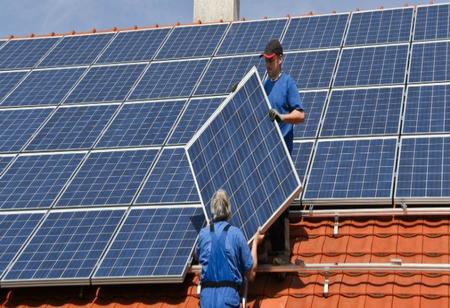The co-founder of Microsoft Corporation and the billionaire philanthropist Bill Gates has allied with a group of philanthropists, firms, and governments to initiate a new climate financing program – Breakthrough Energy Catalyst. The program intends to boost investments in clean technologies that are critical for the energy transition to eliminate greenhouse gas emissions by 2050. The program also concentrates on accelerating innovation in clean energy projects to ensure the costs decline.
Breakthrough Energy Catalyst has identified four important areas for investments – long-duration energy storage, sustainable aviation fuels, direct air capture of carbon dioxide, and green hydrogen.
As per the Catalyst group, these new technologies are ready to be deployed but are unable to draw investors. The group feels that a relatively moderate inflow of funds in these new technologies could get things rolling for the segments.
The group suggests that, first of all, long-duration energy storage has the potential solution to intermittency in renewable energy generation, turning renewable into round-the-clock resources. Solving the issue of intermittency of wind and solar can maximize the utilization of renewable energy sources and amplify the penetration of these technologies within energy infrastructures.
Aviation is recognized as a segment where emissions are hard to abate. It could change with the wider adoption of sustainable aviation fuel, which could power cargo planes and large passenger jets. These are or else too heavy to be powered by batteries.
Direct air capture is a chief carbon removal option to capture CO2 from the atmosphere. A cheaper way of doing so could realize the zero-by-2050 goal faster.
After all, the group points at green hydrogen as a critical contributor in decarbonizing strategies, as it is more powerful than batteries. Nevertheless, when made following protocols to curb greenhouse gases, they turn out to be expensive.
Breakthrough Energy Catalyst targets to demonstrate how global decision-makers can finance, produce, and buy the new solutions that would underpin a low-carbon economy. Its end goal is to manufacture green products follow the same cycle of early adoption, innovation, and cost reductions that made solar power affordable and accessible.
Through Breakthrough Energy Catalyst, energy-intensive sectors would be able to invest in a large refinery that produces a high volume of sustainable fuel and buy fuel there. The group suggests that as the plant meets its goal, the expense of building subsequent plants would drop. With more refineries coming up, the volume of available fuel would go up and the price would come down. This would make it more attractive to buyers and bring in more innovative firms into the market. The model is thus likely to scale up, feels the group.
Towards this end, Breakthrough Energy Catalyst and its nonprofit partner CDP are making a tool to allow those investing in Breakthrough Energy Catalyst to calculate how much their funding will cut more emissions. This mechanism could lead to investing in clean-energy projects turning in a competitive advantage.
An interactive version of the tool is likely to be launched at the COP26 in Glasgow. CDP is slated to issue a report in September, elaborating on how the tool would work.
Breakthrough Energy Catalyst would reportedly fund its first projects next year, and its first major funding partnership has already been proclaimed by the propagators. Over the next five years, the European Commission and Breakthrough Energy Catalyst would bring in a total of $1 billion to set up large-scale, commercial demonstration projects in Europe in partnership with the European Investment Bank.
The investments would address the four sectors of potential growth discussed earlier. The group intends to reduce the expense of these approaches, get them deployed faster, and support deliver on the European Union’s ambitious climate goals. The group is expected to announce more such partnerships towards the end of this year.
Green hydrogen has been gradually drawing interest from investors and researchers.
Earlier this year, a consortium comprising ITM Power, Siemens Gamesa Renewable Energy, Orsted, and Element Energy was awarded €5 million (~$5.89 million) in funding to discover the feasibility of offshore hydrogen production.
